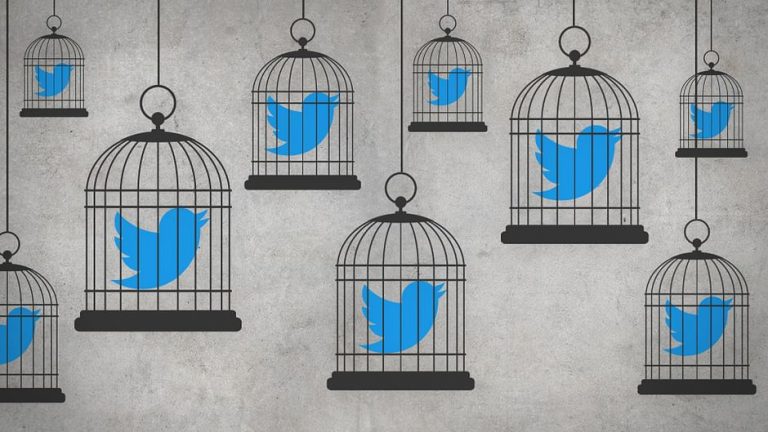
The power of social media is indeed intensive. Despite the threat of propaganda and fake news, it not only lends voice to the oppressed and the marginalized but can act as a bulwark against authoritarian governments.
By Nazarul Islam
The power of social media is indeed intensive—to the extent that despite the threat of propaganda and fake news, it does not only lend voice to the oppressed and the marginalized but more importantly, it can act as a bulwark against the authoritarian governments masquerading as paragons of democratic values.
An uncanny and strong capacity for it, to become a vehicle of protest and whistleblowing, particularly where a person can speak his or her mind, bitch against a government and vent his or her spleen on its policies makes it so popular and therapeutic.
Besides the judiciary, it has become a kind of a life support system for a citizen at a time when the government tends to abuse legal guarantees of liberal freedoms (freedoms of speech, assembly, association, the press, movement, ownership, belief and thought, opinion and expression) and resorts to violence by coercive State apparatus.
As the regular media, often dependent on government patronage, can hardly be trusted to protect such freedoms, social media has its mission cut out for it, its nuisance value notwithstanding.
Twitter is the new pulpit for the high and the mighty. Its enormous power and influence over public opinion all around the world was showcased when Barbadian pop star Rihanna used this platform to express solidarity with India’s protesting farmers last year, drawing a global outpouring of support that sent our government into a tizzy.
The social media traction against Prime Minister Narendra Modi’s farm policies, with support from climate change activist Greta Thunberg, US lawyer and activist Meena Harris, and lawmakers in the UK and the US, backing the protesting farmers in posts on social media, has unnerved the government so much that it had to mobilize a counter-narrative blitzkrieg, with overwhelming hashtags
Young people respect social media a lot. It has empowered common people. Social media has a big role too in the Digital India program – However, if social media users also find themselves in awkward situations, from government backlashes.
They are often accused of spreading fake news, and violence, as they come under threat—because of mounting tension between Twitter and the government; peeved over the company’s refusal in India to fully comply with orders to remove certain accounts that were critical of the government’s handling of the ongoing farmers’ protests.
In principle, the government cannot be put at fault. However, what happens on the ground is completely antithetical to what the government preaches. “Democracy and freedom were a part of India’s civilizational ethos”, Modi had piously averred at the virtual G-7 summit, which, after a fashion, is as much true, as his saying that “cyberspace remains an avenue for advancing democratic values and not of subverting it.”
Again, India’s Prime Minister has an amazing capacity to make the right noises at the right fora, and none can dispute them at their face value. He said that he “shared the concern” expressed by several leaders that “open societies are particularly vulnerable to disinformation and cyber-attacks.”
However, it is the government’s record of clamping down on public freedom far too frequently that makes its speech and intentions suspect.
Obviously, the battle between the government and Twitter has become a battle of wits and, one suspect, egos. One wishes the battle had been as righteous as it is claimed to be.
Twitter had faced recent run-in with the government after the ‘blue tick’ verification badge was removed from the personal account of Vice President M Venkaiah Naidu and of several senior RSS functionaries.
On record, Twitter showed rare courage when it permanently banned Donald Trump’s Twitter account some months ago when it decided that the tweets of the then President of the United States were inciting violence leading to the storming of the US Capitol.
That it would not allow any transgression, even if it was by a person holding as high an office as the American presidency, gave hope, particularly in India where even a municipal commissioner or a judicial magistrate is seen to exercise unconscionable authority over people deemed subordinate to him or her.
Again, when it comes to making a choice between the oligopoly of Big Tech and the anti-democratic predilections of a government, it becomes a dilemma.
Recently, India’s cartoonist Manjul’s Twitter account fell foul of the authorities, presumably because he’s perceived to be critical of Modi and his government. Delhi police dragged Disha Ravi over the toolkit controversy, the heavy-handedness of which looked like an inquisition.
On record is the case of Amethi Police that had also registered a criminal case against a young man in UP in April who took to Twitter to make an appeal for an oxygen cylinder. The litany of charges pressed against him included circulating a rumor “with intent to cause…fear or alarm… whereby any person may be induced to commit an offence against the riling with the Twitter? State or against the public tranquility….
Wherever we live in the subcontinent, did we enjoy a tradition of free speech and democratic practices dating back…maybe, centuries? Protecting free speech is certainly not the prerogative of only a private, for-profit, foreign entity like Twitter.
The unsavory truth is that behind the veneer of good intention and the real threat of social media being overrun by hostile propagandists and armchair revolutionaries, the recent shenanigans against Twitter smack of an overwhelming urge for censorship.
[author title=”Nazarul Islam ” image=”https://sindhcourier.com/wp-content/uploads/2021/05/Nazarul-Islam-2.png”]The Bengal-born writer Nazarul Islam is a senior educationist based in USA. He writes for Sindh Courier and the newspapers of Bangladesh, India and America. He is author of a recently published book ‘Chasing Hope’ – a compilation of his 119 articles.[/author]